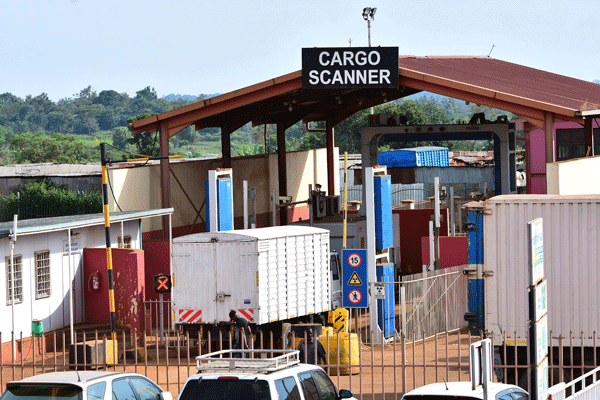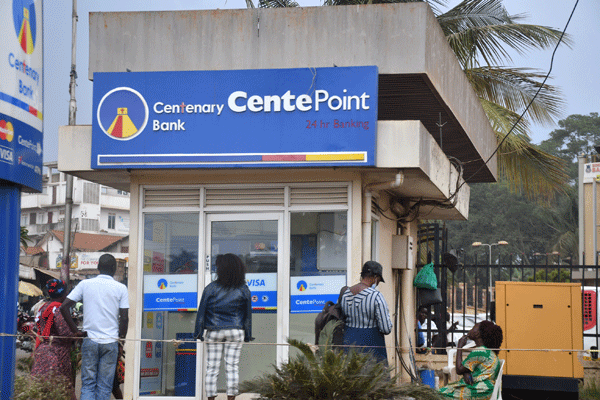Prime
How a Washington decision could affect Uganda’s economy

L-R: Presidents Yoweri Museveni of Uganda, Paul Kagame of Rwanda and Salva Kiir of South Sudan launch the Standard Gauge Railway construction project in Munyonyo, Kampala in 2014. FILE PHOTO
What you need to know:
Impact. The raising of interest rates by the US Federal Reserve could further weaken the Shilling, among other things
Kampala.
Last week, economists, bankers and financial analysts watched as the United States Federal Reserve raised interest rates for the first time in a decade.
The US Federal Reserve decision can be compared to that of Bank of Uganda (BoU) Central Bank Rate.
In the US, that rate was raised to 0.25 percent as the Fed argued that the American economy was getting stronger.
Several hours to the US Fed interest meeting, Uganda’s own benchmark interest was kept at 17 percent because the forecast for inflation was still on the high side.
Uganda’s policy decision, however, has less significant impact on a global scale compared to the US Fed decision.
That is why, in making the decision to keep interest rates at 17 percent, BoU Governor Emmanuel Tumusiime-Mutebile had the US Fed in his mind.
“However, there are downside risks to the projected growth, including those emanating from the external economic environment…the major risks include a possible monetary policy tightening in the US,” said the Monetary Policy Statement (MPS) for December 2015.
The US Fed hours later increased the rate – tightened monetary policy. Like Mutebile said, the effects for the Ugandan economy exist and will manifest in different forms.
Shilling could weaken
It has not been the best year for the Uganda Shilling because the dollar has been much stronger against all currencies in the world.
This, according to Mr Stephen Kaboyo, the managing partner at Alpha Capital Partners could continue because of the rise in interest rates in the US.
“An increase in the US interest rates will definitely redirect the flow of capital from the frontier and emerging markets as investors seek higher returns in the largest economy in the world. This boosts the value of the dollar vis-a-vis other currencies and hence depreciation of these currencies,” Mr Kaboyo told Daily Monitor in an email response.
In the week the announcement was made, the Uganda Shilling had started trading near the Shs3,500 against the dollar but eventually settled below the Shs3,400 mark.
In fact, it started by weakening and by the end of last week; it had made some considerable gains.
Mr Kaboyo said for now, the Uganda Shilling will remain stable due to subdued demand for dollars and slowdown of activity ahead of Christmas holiday.
A Bank of Africa note indicates that “market players trimmed forex positions in preference for the local unit.”
The concern for the Central Bankers in Uganda will be the effects of the depreciation.
Already this year, the Shilling depreciation has led to the rise of fuel, power tariffs, mortgage rates and interest rates.
If the trend continues, as Mr Mutebile said, this could have an impact on the projected 5 per cent growth target.
“Consequently, our balance of payments in the short to medium term will remain vulnerable to external shocks,” Mr Mutebile said in the MPS issued on Wednesday last week.
Slowed investment
Uganda’s economy is already projected to be less productive than previously projected.
Both BoU and the International Monetary Fund cut the growth forecast for Uganda from 5.8 per cent to 5 per cent, partly due to the Central Bank’s move to curtail further inflationary pressures.
In order to grow, the country also needs Foreign Direct Investment (FDI), however, this could also slow with the interest rate hike in the US.
“The increase in interests in the US is likely to turn the flow of investment finance from developing countries to the US, which is more secure,” says Mr Musa Muyanja, a research analyst at the Economic Policy and Research Centre.
Adding, “The reduced flow of international finance could also lead to a drop in the Uganda’s economic growth projections.”
Already, the country has been experiencing slowed investment partly due to the hushed activity in the oil sector.
In 2014/15, Uganda recorded a 20 per cent decline - $250 million (Shs836.2 billion) - in Foreign Direct Investment (FDI), a sector that forms a large percentage of expected dollar inflows, together with remittances and exports to Europe and East Africa.
Additionally, the further participation of the offshore investors in the government debt market is likely to reduce despite the higher interest rates.
According to Dr Adam Mugume, the director research at BoU, due to the subdued demand for the Ugandan government debt, “perception on the riskiness of countries like Uganda rises, that is, risk premium will rise, adding additional pressure on interest rates.”
Each time interest rates on government debt increase, the private sector is crowded out.
High interest on external debt
As the country negotiates external debt to finance big-ticket projects like the Standard Gauge Railway and Kampala–Jinja Expressway, the interest paid, if pegged to the dollar, will rise.
This also affects companies that intend to borrow in foreign currency.
“Our foreign debt is negotiated and quoted in US dollars and the US interest rates are reference rates for debts of different maturities. This means interest rates on foreign debts incurred on variable interest rates should rise. Foreign debts being currently negotiated will also attract higher interest rates,” Mr Mugume said.
Uganda’s current stock of external debt according to the World Bank is $5b (Shs16.7 trillion).
In 2016/17, the government places interest payments on government debt at Shs178 billion up from Shs172 billion in the current financial year.
Effective policy
BoU executive research Adam Mugume said from January to December, the monetary policy has been effective and has supported domestic credit growth, high economic growth and subdued inflation rate.
“The Shilling denominated loans have been growing at annual rate of 17 per cent, it is only the foreign currency denominated loans that have registered a decline due to depreciation in the foreign exchange market,” he said.
Why the Raise
The Federal Reserve decided to raise short-term interest rates for the first time since the financial crisis. Officials said the economy was strong enough to keep growing with a little less help from the central bank.
Among the Fed’s roles are maximizing employment and moderating inflation. Job growth has strengthened steadily since the recession, and the Fed’s policy-making committee said in a statement it expected that progress to continue. Inflation remains weak, but the Fed said it expected prices to start rising more quickly.
Unemployment is falling toward precrisis levels and a new Fed labor market index that tracks a range of data has recovered most of the ground lost during the Great Recession.
But officials remain concerned about sluggish inflation, which is both a sign of economic weakness and an impediment to faster growth.




